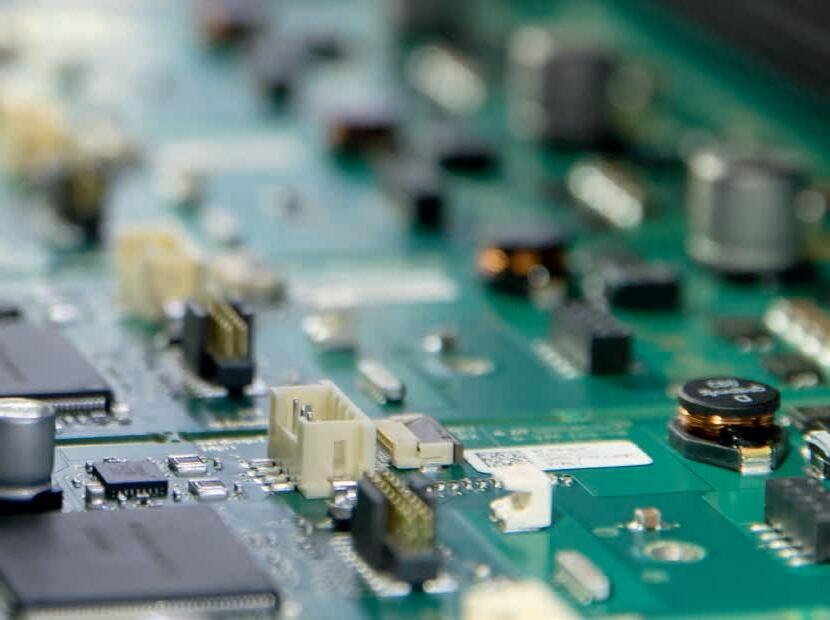
4 minute read
At home in the digital world
ASMPT, a comprehensive software, hardware, and services provider in the semiconductor and electronics manufacturing sector, demonstrates what shaping a positive and sustainable future can look like these days. While the company enjoys healthy growth, it also continuously improves operational efficiency and resource management. With the new, advanced compressed air station at its Munich Obersendling site, ASMPT has taken a further step in the right direction.
Digital transformation has many facets. New technologies such as mobile connectivity, the Internet of Things, expert systems and real-time simulations shape the concept of Industrie 4.0, making products smarter, more flexible and resource-efficient. Above all, there is the desire for automation. In electronics manufacturing too, the focus is increasingly shifting towards Industrie 4.0 and the Integrated Smart Factory.

In the near four decades it has been active, ASMPT has evolved from an equipment supplier to a provider of complete solutions for semiconductor and electronics manufacturing, thereby becoming synonymous with the Integrated Smart Factory. Today it supports countless customers from a variety of industries worldwide with a broad range of products and services. The company demonstrates its technological leadership with best-in-class hardware and software, such as SIPLACE mounting machines, DEK printers, inspection and material storage solutions, as well as WORKS, its proprietary intelligent shop floor management suite. ASMPT’s Open Automation concept forms the basis for modular, flexible, manufacturer-independent – and therefore economically viable – automation in its customers’ SMT manufacturing applications.
A site with history
The ASMPT site in Munich is located on a section of the former Siemens premises in Obersendling. The long history of the electronics giant Siemens can be felt everywhere here, in the buildings as well as in the highly advanced manufacturing processes. Our editorial team had the opportunity to view a production line during their visit to the Munich facility, where customer-tailored mounting machines for circuit boards are produced. Once the machine is fully assembled, it undergoes a test run to ensure that it meets all of the customer’s requirements.

Here we are talking about high-precision robotics, since the components being mounted on the assembly machines are minute. This is where compressed air comes into play, as it is used to generate the vacuum (Venturi principle) that picks up the tiny components from the carrier material and holds them in place for precise positioning. Additionally, compressed air is used to cut the carrier reels for these components. Up until 2002, the entire building, including the old compressed air station, was still owned by Siemens. The old station was located in the basement beneath the former company cafeteria and had to be relocated due to the renovation plans. During this process, the station was also slated for modernisation. It comprised three compressors of different sizes from various manufacturers and was not only oversized, but also inefficient and resource intensive.
Compressed air station with green fingers
Various options were discussed when selecting the new location for the compressed air station. Ultimately, housing it at ground level in a container near to the manufacturing area proved to be the most practical and cost-effective solution. However, there were several strict regulations imposed by the city of Munich that had to be taken into consideration, since ASMPT is situated in a mixed residential and industrial zone. These regulations primarily concern adherence to sound emission limits (maximum of 45 dB during the day, 39 dB at night). This was addressed by lining the entire container with sound insulation mats. Another requirement relates to the container roof: in accordance with Munich’s green space ordinance, a certain portion of the roof must be maintained as green space and planted. Therefore, it has been adorned with assorted greenery and flowering plants, offering a pleasant sight to onlookers from surrounding buildings. Meanwhile, three KAESER rotary screw compressors (CSDX 165 SFC, CSDX 165 and CSD 85) carry out their work quietly and efficiently inside the container. Two energy-saving SECOTEC TF 340 refrigeration dryers are also installed to maintain a reliable pressure dew point of +3°C. Together with various high-performance filters, they ensure that the compressed air in contact with sensitive electronic components meets purity class 1-4-1 in accordance with ISO 8573-1.
The advanced SIGMA AIR MANAGER 4.0 master controller provides demand-oriented compressed air management. Last but not least, a KAESER maintenance contract, including maintenance parts, guarantees maximum compressed air system reliability, availability, cost efficiency and value retention.









